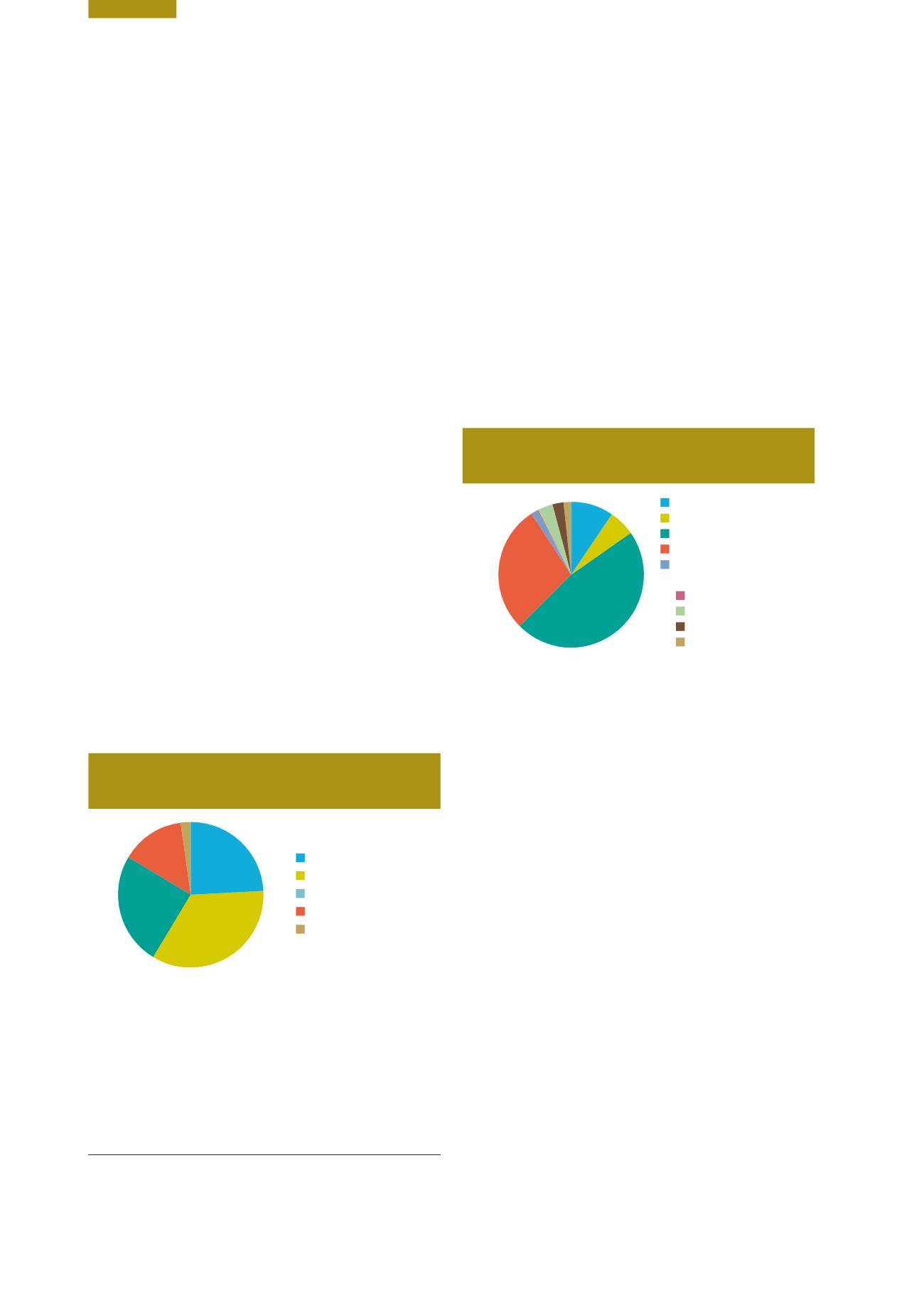

Ireland’s Environment – An Assessment 2016
176
Current Position and Trends in
Energy Use
As the economy improves the renewable sector needs
to keep pace and the decoupling of economic growth
from increasing energy use needs to be accelerated.
Ireland’s total energy use in 2014 was 556 terajoules (TJ)
(1.5 × 108 kWh). According to the Sustainable Energy
Authority of Ireland (SEAI), the average household uses just
under 50 kWh daily, of which 13 kWh is electrical energy.
3
European Environment Agency (EEA) data suggest that, at
a European level, Ireland’s household energy usage is the
second highest, only below that of Finland.
4
Ireland had the
fourth highest rate of energy import dependency (85.3%)
among the European Union (EU) Member States in 2014,
mainly in fossil energy. This dependency is both expensive
(€5.7 billion in 2014) and environmentally unsustainable.
However, overall energy use in Ireland has declined since
its peak in 2008. While this was primarily linked to the
economic recession, there is evidence of increasing energy
efficiency. There was also an increased use of renewable
energy in this period. As Ireland returns to prosperity,
decoupling of economic growth from increasing energy use
needs to be accelerated.
As shown in Figure 11.1, Ireland’s principal energy
requirements arise from transport, accounting for 35% of
the total, and residential heating and electricity, accounting
for 25%. Decarbonisation of energy use in the transport
sector is a key challenge, which is addressed in Chapter 10.
Figure 11.1
Ireland’s Energy Requirements by
Sector (Source: SEAI, 2015)
Industry
24.2%
Transport
34.5%
Residential
24.9%
Services
14.2%
Agriculture/Fisheries
2.1%
3
www.seai.ie/Publications/Statistics_Publications/Energy_in_Ireland/ Energy-in-Ireland-1990-2014.pdf4
www.eea.europa.eu/data-and-maps/indicators/energy-efficiency-and- energy-consumption-5/assessmentCurrent Dependence on Fossil Fuels
Fossil fuel energy, especially oil, still makes up about
90% of Ireland’s energy use profile, illustrating the
extent of the decarbonisation challenge.
Figure 11.2 shows the sources for energy used in Ireland in
2014 (SEAI, 2015a). Fossil energy makes up about 90% of
Ireland’s energy use profile, of which oil (at 47%) remains
the dominant fossil energy used, primarily for heating and
transport. Overall trends in the use of various fossil energy
sources vary, but there is a general decrease in fossil
energy use and the use of renewable energy is growing,
albeit from a very low base (currently approximately 8%).
Figure 11.2
Fuels Used for Energy in 2014 Based
on SEAI Data (Source: SEAI)
Coal
9.6%
Peat
5.8%
Oil
47.3%
Natural Gas
28.2%
Electricity Imports
1.4%
Renewables
Hydro
0.5%
Wind
3.3%
Biomass
2.3%
Other renewables
1.6%
Figure 11.3 shows the changing nature of the fuels used
for electrical power generation over recent years (CER,
2015). While there has been a significant increase in
renewable energy generation, largely from wind, the
data also show that gas remains the largest source of
energy used. The increase in renewable energy use largely
displaced gas rather than coal or peat, use of which
has remained relatively stable. There are a number of
compelling reasons why displacement of peat and coal
would be preferable to displacing natural gas, including
reducing greenhouse gas (GHG) emissions and improving
air quality.
In Ireland, the electrical power generation sector
accounted for 35% of energy used in 2014. Just over
half of this energy is lost in the generation process and
in distribution losses in the grid (SEAI, 2015a). The use
of highly carbon-intensive fuels such as coal and peat
has remained remarkably stable in this sector since 2007.
Decarbonisation of this sector requires that coal and peat
use is phased out rapidly, while a much greater use of
renewables is required going forward. It is also essential
that energy losses in transmission are factored into
decision making on future energy systems.


















